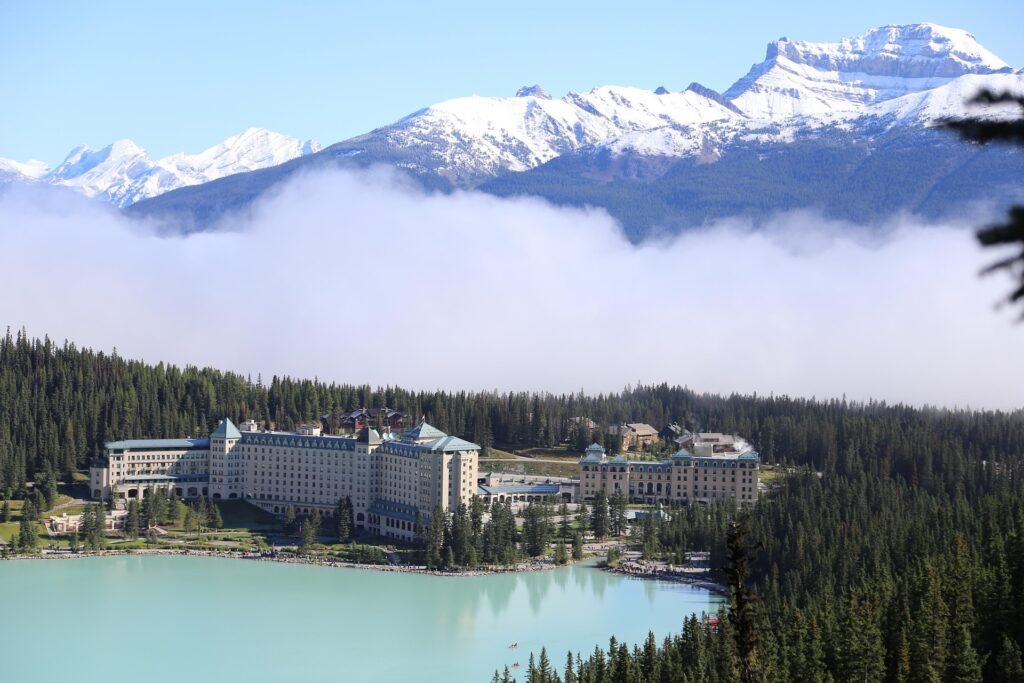Water is one of nature’s most versatile and photogenic elements. It can be calm and reflective, fast and powerful, or delicately cascading—each form offering unique photographic opportunities. Whether you’re drawn to serene alpine lakes, rushing rivers, or dramatic waterfalls, water invites endless creativity for nature photographers.
In this blog, we explore the best global destinations to photograph water in all its natural beauty.
1. Plitvice Lakes National Park, Croatia
Plitvice Lakes is a wonderland of turquoise lakes, terraced waterfalls, and lush forests.
Why Photographers Love It:
- Stunning waterfalls cascading into crystal-clear lakes.
- Wooden walkways providing excellent vantage points.
- Rich greenery contrasts beautifully with the blue-green water.
Pro Tip:
Visit in spring or autumn for fewer crowds and more vibrant foliage. Use long exposures to soften the flow of waterfalls.
2. Lake Louise, Canada
Lake Louise in Banff National Park is a picture-perfect glacial lake known for its striking turquoise waters and mountain backdrop.
Why Photographers Love It:
- Mirror-like reflections of snow-capped peaks.
- Brilliant wildflowers in summer and a frozen wonderland in winter.
- Canoes adding scale and color to wide lake shots.
Pro Tip:
Arrive at sunrise for calm water and glowing mountain peaks bathed in golden light.

3. Iguazu Falls, Argentina & Brazil
Iguazu Falls is one of the largest and most powerful waterfall systems in the world, consisting of over 250 separate falls.
Why Photographers Love It:
- The sheer scale and volume of cascading water create dramatic compositions.
- Rainbows often appear in the mist, adding magic to the scene.
- Walkways and boat tours offer close-up perspectives.
Pro Tip:
Use wide-angle lenses to capture the grandeur and consider shooting with a rain cover due to the heavy mist.
4. Milford Sound, New Zealand
Milford Sound is a fjord with towering cliffs, plunging waterfalls, and serene reflective waters.
Why Photographers Love It:
- Epic vertical cliffs rising from the water.
- Stirling Falls, one of the most photogenic waterfalls in the fjord.
- Moody weather often adds atmospheric mist and soft light.
Pro Tip:
Shoot on overcast days to minimize harsh contrasts and maximize the fjord’s mystical feel.
5. Victoria Falls, Zambia & Zimbabwe
Victoria Falls, known locally as “The Smoke That Thunders,” is one of the world’s most spectacular waterfalls.
Why Photographers Love It:
- Immense power, mist clouds, and rainbows.
- Seasonal variations offer completely different perspectives—thundering high-flow views or exposed rock faces in the dry season.
- Unique angles from helicopter flights and Devil’s Pool.
Pro Tip:
Be prepared to protect your camera from water spray, especially during peak flow season.
6. Jiuzhaigou Valley, China
Jiuzhaigou is a fairytale landscape of multi-colored lakes, cascading waterfalls, and snow-capped peaks.
Why Photographers Love It:
- Crystal-clear lakes with turquoise, green, and sapphire tones.
- Wooden walkways provide excellent access to the best photography spots.
- Vibrant autumn colors create stunning contrasts with the water.
Pro Tip:
Use polarizing filters to reduce glare and bring out rich colors in the lakes.
7. Seljalandsfoss, Iceland
Seljalandsfoss is a unique Icelandic waterfall where visitors can walk behind the falling water.
Why Photographers Love It:
- Opportunity to photograph the waterfall from both the front and behind the curtain of water.
- Sunset creates glowing backlight through the falls.
- Surreal misty atmosphere with lush green cliffs.
Pro Tip:
Bring waterproof gear and use a fast shutter speed to freeze water droplets when standing behind the falls.
Essential Tips for Water Photography:
- Experiment with shutter speed: Slow shutter speeds (1/4 sec or longer) create silky water effects; faster speeds freeze motion.
- Use a tripod: Essential for long-exposure shots of waterfalls and rivers.
- Incorporate reflections: Still lakes offer beautiful mirror images—compose carefully to maximize symmetry.
- Time your visit: Early morning and late evening offer soft light and calmer waters.
Water is one of the most versatile subjects in nature photography—it can be serene, powerful, or beautifully abstract. Whether you’re shooting the grand sweep of a waterfall or the quiet elegance of a mountain lake, water scenes can evoke emotion and wonder like few other subjects.
































